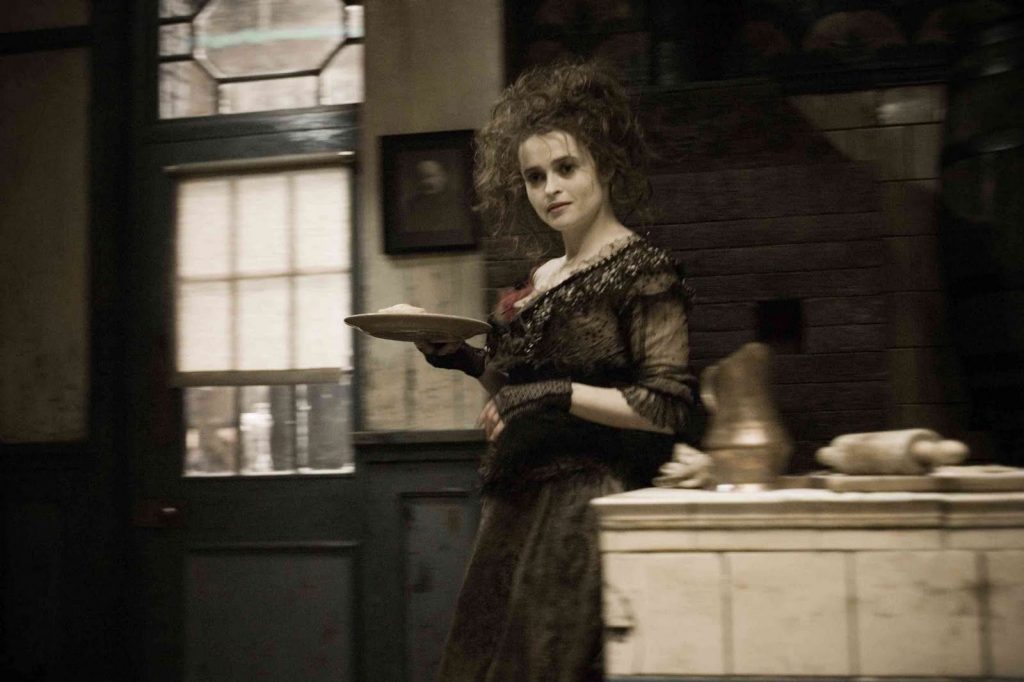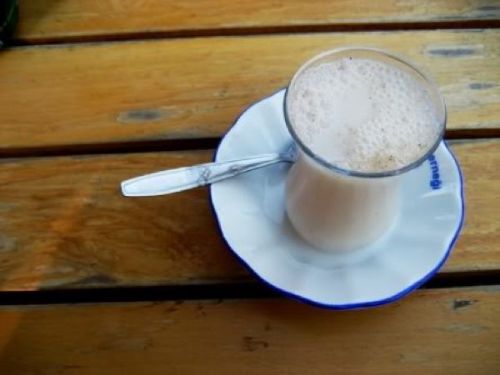The Victorian Era is pretty famous for being super weird. They had weird ideas about sex, fashion, religion, poor people, morality, science, and almost everything else. It seems only fitting that this was an era of weird food, too. It’s undeniable that the Victorians ate some pretty tasty-sounding things, like plum pudding and roast goose. The era’s famous for its love of delicious sponge cakes, tiny cookies, and obsession with tea. But, the Victorians’ idea of what was edible was a little bit different than ours.
1. Jellied Eels
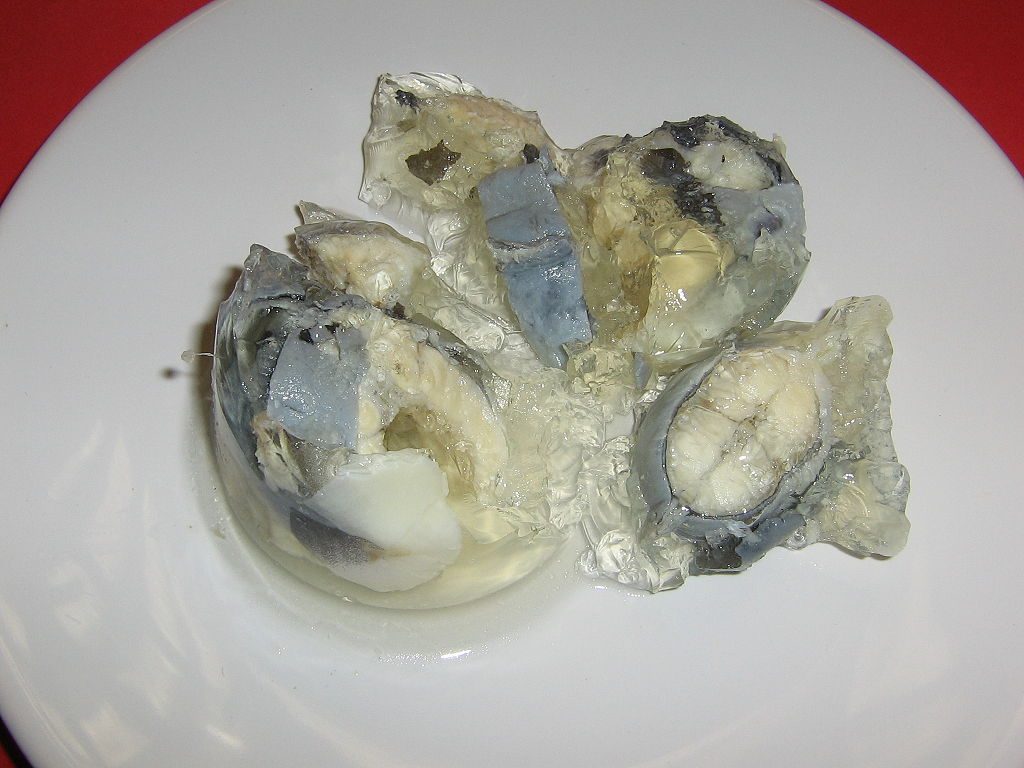
PHOTO: wikimedia
Let’s just talk about this for a second. Jellied eels originated on the East End of London during the Victorian Era. The dish was made with chopped eels that were boiled in a stock. The whole mixture was allowed to cool, causing the fats to set and congeal into a jelly. It was served cold.
Tasty.
2. Saloop
Saloop was a cheap shop’s way of avoiding selling coffee and tea, which, during the Victorian Era, were really expensive. It was originally made with a flour ground from orchid roots, but later was comprised of sassafras, as in the main ingredient that flavors root beer. This little guy was served hot with milk and sugar, and was popular for a good while until Victorian doctors started saying it could treat STIs. After that, everyone was too embarrassed to drink it in public.
3. Sheep Trotters

PHOTO: animalsaustralia.org
Sheep’s trotters are exactly what they sound like: feet from a sheep. The Victorians liked to boil them at home when they couldn’t afford other meat. If you were out and about, though, this fried sheep’s trotters would be served by pretty much every single food vendor out there, right alongside a ham sandwich. A bit chewy, a bit bony, but the Victorians thought they were delicious.
4. Boiled Calf’s Head
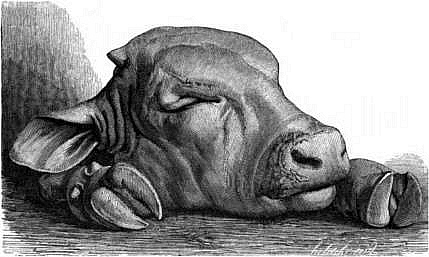
PHOTO: foodsofengland.co.uk
Yep. Believe it or not, this was considered quite the delicacy.
According to a recipe in ‘The Accomplisht Cook’, this was how you cooked Calf’s Head:
Take a calves head, cleave it and take out the brains, skins, and blood about it, then steep them and the head in fair warm water the space of four or five hours, shift them three or four times and cleanse the head; then boil the brains, & make a pudding with some grated bread, brains, some beef-suet minced small, with some minced veal & sage…fill the head with this pudding, then close it up and bind it fast with some packthread, spit it, and bind on the caul round the head with some of the pudding round about it, rost it & save the gravy, blow off the fat, and put to the gravy; for the sauce a little white-wine, a slic’t nutmeg & a piece of sweet butter, the juyce of an orange, salt, and sugar. Then bread up the head with some grated bread; beaten cinamon, minced lemon peel, and a little salt.
5. Broxy
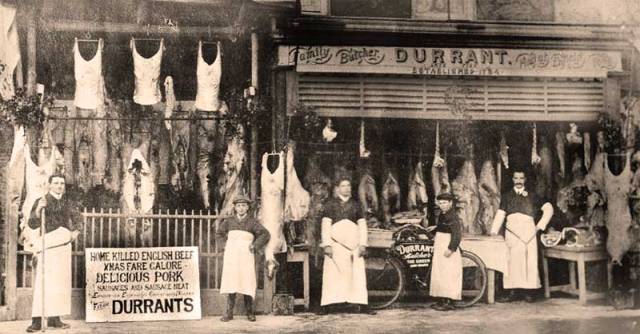
PHOTO: Pinterest
If broxy kind of rhymes with “pox” it’s purely coincidental…or is it? Meat was pretty expensive during the Victorian Era, but besides beans and eggs, it was the most readily available protein. Poor families who couldn’t afford better cuts of meat bought broxy from a butcher instead. Broxy was a butcher’s term for any kind of meat, usually sheep, that had dropped dead of disease. Since sheep carried lots of communicable diseases, including tetanus, salmonella, and ringworm, you’d probably drop dead too once you ate broxy.
6. Pickled Calf’s Foot
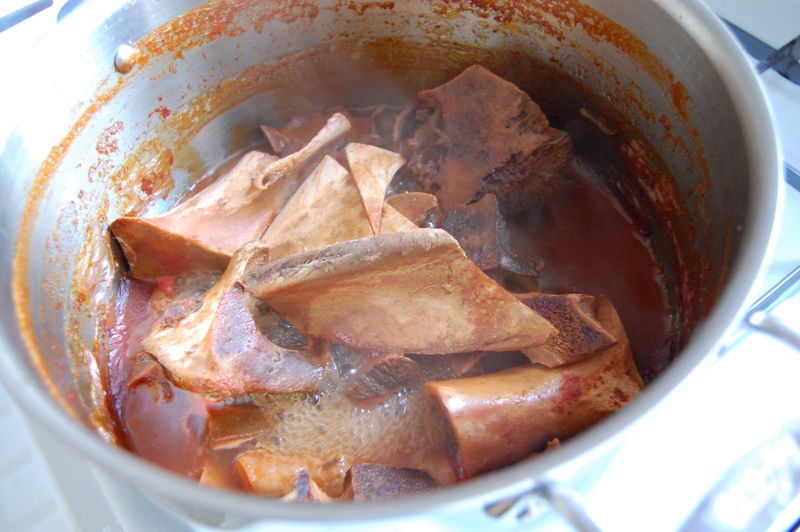
PHOTO: alineaathome.typepad.com
Noticing a weird obsession with strange parts of the animal? The Victorians might have been obsessed with opulence and appearances, but they were also famous for being thrifty. In the Victorian Era, no part of the animal went to waste.
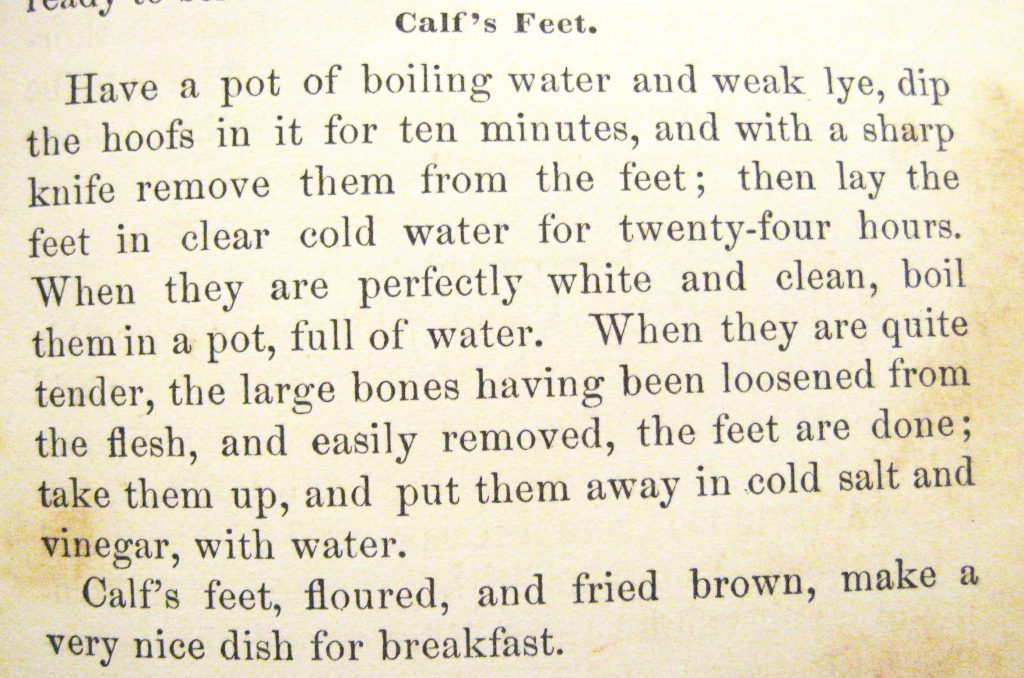
PHOTO: blogs.lib.unc.edu
Pickled calf’s foot, or calf’s foot jelly, was made by boiling the feet of multiple calves in water for forever in a bunch of spices, salting them, and then leaving them to set on a shelf for a dangerously long time.
7. Water Souchy
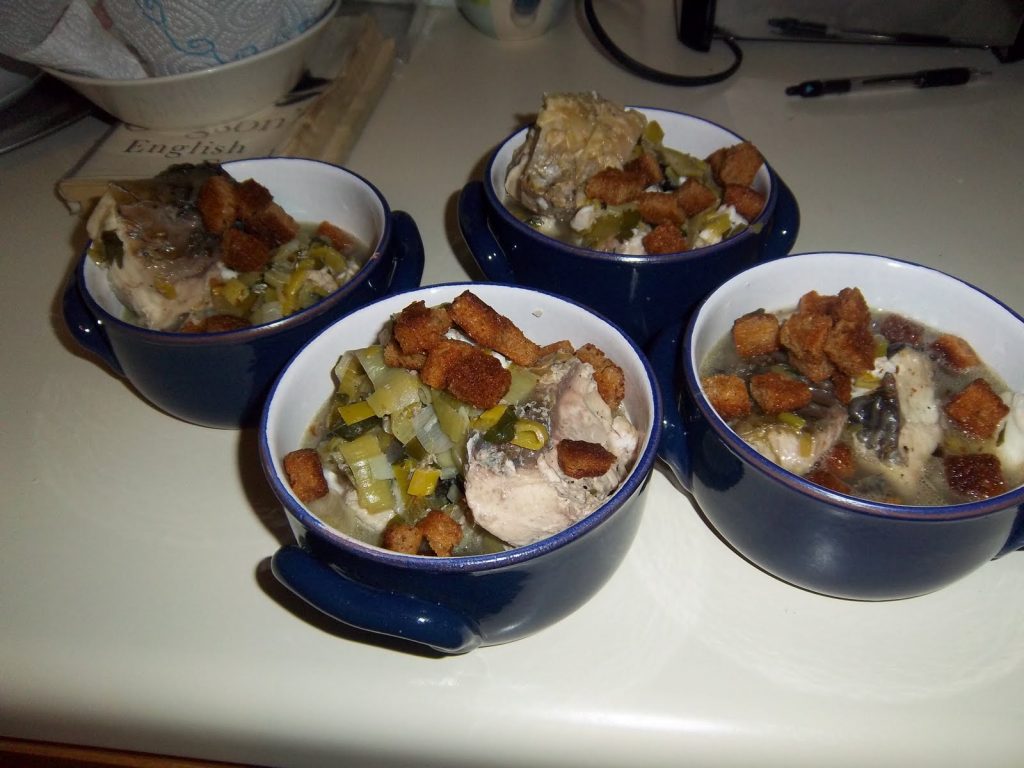
PHOTO: Neil Cooks Grigson
“Water Souchy” is a fancy name for “seafood water”. To make water souchy, you go out fishing or look in your ice box and scrape together whatever seafood you can find, throw it in a pot, boil it with a couple parsley roots, some old wine, and vinegar if you have it, and voila! Water Souchy. A lot of the time, the soup ended up tasting a lot like mud, and a degree of caution was essential to consuming the dish, as the cooks rarely ever boned the fish.
Bon appetit!


